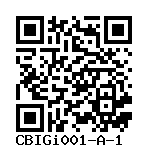PRKN-KO, PRKN-KO/AIW002-02, IPSC0070
CBIGi001-A-1
General
Cell Line |
|
| hPSCreg name | CBIGi001-A-1 |
| Cite as: | CBIGi001-A-1 (RRID:CVCL_C0JZ) |
| Alternative name(s) |
PRKN-KO, PRKN-KO/AIW002-02, IPSC0070
|
| Cell line type | Human induced pluripotent stem cell (hiPSC) |
| Similar lines |
CBIGi001-A-3 (PINK1-KO/PRKN-KO/AIW002-02, PINK1-KO/PRKN-KO, IPSC0069) CBIGi001-A (AIW002-02, IPSC0063) CBIGi001-A-2 (PINK1-KO, PINK1-KO/AIW002-02, IPSC0072) STBCi004-B-1 (SFC832-03-06 LRRK2WT/WT C47) Donor's gene variants: LRRK2 Donor diseases: Parkinson disease EDi001-A-2 (AST23-1KO-3, AST22-1KO-3, AST-23_SCAKO Clone 3, AST-22_SNCAKO Clone 3) Donor's gene variants: SNCA, SNCA, SNCA, SNCA Donor diseases: Parkinson disease EDi001-A-3 (AST23_SNCAKO Clone 1, AST22-1KO-1, AST23-1KO-1, AST22_SNCAKO Clone 1) Donor's gene variants: SNCA, SNCA, SNCA, SNCA Donor diseases: Parkinson disease EDi001-A-4 (AST22-2KO-6, AST23_SNCAKO Clone 6, AST22_SNCAKO Clone 6, AST23-2KO-6) Donor's gene variants: SNCA, SNCA, SNCA, SNCA Donor diseases: Parkinson disease WAe001-A-76 (H1-RNF1-/-) UCSFi001-A-74 (FUS-P525L HET 2D1) UCSFi001-A-75 (FUS-P525L HOM 2D2) BIONi010-C-2 (BIONi010-C ApoE E3/E3 #H8 P32) BIONi010-C-3 (BIONi010-C ApoE KO #KO30 P30) BIONi010-C-25 (BIONi010-C heterozygous TREM2 KO) WTSIi018-B-18 (Kolf 2.1 J (TARDBP M337V WT/SNV)) BIONi010-C-70 (BIONi010-C with an APOE 2/2 genotype with an additional, homozygous christchurch mutation) BIONi010-C-71 (BIONi010-C with an APOE 3/3 genotype with an additional, homozygous christchurch mutation) UQi001-A-1 (C11-TDP43-A382T) BIONi010-C-4 (BIONi010-C ApoE E4/E4 #B44 P27) BIONi010-C-5 (BIONi010-C CD33 E2del #N14 P26) WTSIi018-B-21 (Kolf 2.1 J (TARDBP M337V SNV/SNV)) WTSIi018-B-22 (Kolf 2.1 J (TARDBP Q331K WT/SNV)) WTSIi018-B-23 (Kolf 2.1 J (TARDBP Q331K SNV/SNV)) WTSIi018-B-24 (Kolf 2.1 J (FUS R495X WT/SNV)) WTSIi018-B-25 (Kolf 2.1 J (FUS R495X SNV/SNV)) WTSIi018-B-26 (Kolf 2.1 J (FUS R521H WT/SNV)) WTSIi018-B-27 (Kolf 2.1 J (FUS R521H SNV/SNV)) |
| Last update | 11th March 2025 |
| User feedback | |
Provider |
|
| Generator | Clinical Biospecimen Imaging and Genetic (C-BIG) Repository (CBIG) |
| Owner | Clinical Biospecimen Imaging and Genetic (C-BIG) Repository (CBIG) |
| Distributors | |
| Derivation country | Canada |
External Databases |
|
| BioSamples | SAMEA12565661 |
| Cellosaurus | CVCL_C0JZ |
| Wikidata | Q112929367 |
General Information |
|
| Publications |
|
| * Is the cell line readily obtainable for third parties? |
Yes Research use: allowed
Clinical use: not allowed
Commercial use: not allowed
|
| Subclone of | |
Donor Information
General Donor Information |
|
| Sex | male |
| Ethnicity | Caucasian |
Phenotype and Disease related information (Donor) |
|
| Diseases | No disease was diagnosed.
|
Other Genotyping (Donor) |
|
| Is there genome-wide genotyping or functional data available? |
No
|
Donor Relations |
|
| Other cell lines of this donor | |
External Databases (Donor) |
|
| BioSamples | SAMEA12565539 |
Ethics
Also have a look at the ethics information for the parental line
CBIGi001-A
.
| For generation of the cell line, who was the supplier of any recombined DNA vectors or commercial kits used? |
hIPSC Derivation
General |
|
|
The source cell information can be found in the parental cell line
CBIGi001-A.
|
|
Reprogramming method |
|
| Vector type | None |
Vector free reprogramming |
|
Other |
|
| Derived under xeno-free conditions |
Unknown |
| Derived under GMP? |
Unknown |
| Available as clinical grade? |
Unknown |
Culture Conditions
| Feeder cells |
No |
| Passage method |
Enzyme-free cell dissociation
Gentle Cell Dissociation Reagent
|
| Medium |
mTeSR™ 1
|
Characterisation
Analysis of Undifferentiated Cells
| Marker | Expressed | Immunostaining | RT-PCR | Flow Cytometry | Enzymatic Assay | Expression Profiles |
| NANOG |
Yes |
|
||||
| TRA 1-60 |
Yes |
|
||||
| SSEA-4 |
Yes |
|
||||
| POU5F1 (OCT-4) |
Yes |
|
Differentiation Potency
Genotyping
Karyotyping (Cell Line) |
|
| Has the cell line karyotype been analysed? |
Yes
46,XY
Karyotyping method:
G-Banding
|
Other Genotyping (Cell Line) |
|
Genetic Modification
| Disease/phenotype related modifications |
|
| Genetic modifications not related to a disease |
|


Login to share your feedback, experiences or results with the research community.